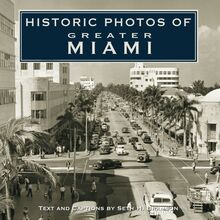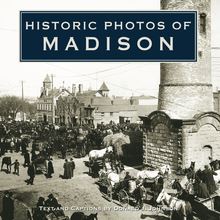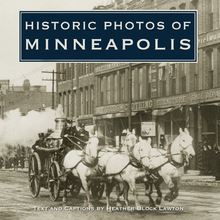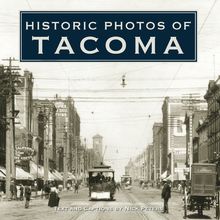Historic Photos of San Francisco , livre ebook
156
pages
English
Ebooks
2006
Vous pourrez modifier la taille du texte de cet ouvrage
Obtenez un accès à la bibliothèque pour le consulter en ligne En savoir plus
Découvre YouScribe en t'inscrivant gratuitement
Découvre YouScribe en t'inscrivant gratuitement
156
pages
English
Ebooks
2006
Vous pourrez modifier la taille du texte de cet ouvrage
Obtenez un accès à la bibliothèque pour le consulter en ligne En savoir plus
Publié par
Date de parution
01 décembre 2006
Nombre de lectures
0
EAN13
9781618586803
Langue
English
Poids de l'ouvrage
3 Mo
Publié par
Date de parution
01 décembre 2006
Nombre de lectures
0
EAN13
9781618586803
Langue
English
Poids de l'ouvrage
3 Mo
This aerial photo depicts a classic summer day in San Francisco, as fog creeps toward the city, taken in July of 1954. San Francisco is surrounded on three sides by frigid ocean and bay water, which combines with the heat from the California mainland to create the thick fog for which San Francisco is noted. Because of this topography, there is little variation in average temperature between the seasons, and San Francisco maintains a yearly average 65° Fahrenheit.
Turner Publishing Company 200 4th Avenue North • Suite 950 Nashville, Tennessee 37219 (615) 255-2665
www.turnerpublishing.com
Historic Photos of San Francisco
Copyright © 2006 Turner Publishing Company
All rights reserved.
This book or any part thereof may not be reproduced or transmitted in any form or by any means, electronic or mechanical, including photocopying, recording, or by any information storage and retrieval system, without permission in writing from the publisher.
Library of Congress Control Number: 2006934479
9781618586803
Printed in the United States of America
09 10 11 12 13 14—0 9 8 7 6
Table of Contents
Title Page Copyright Page ACKNOWLEDGMENTS PREFACE THE PARIS OF THE WEST - (1860–1899) OUT OF THE ASHES - (1900–1919) THE PARTY MOVES UNDERGROUND - (1920–1929) BRIDGE TO THE FUTURE - (1930–1939) WARTIME BOOM - (1940–1949) RETURN TO “NORMALITY” - (1950–1959) A DECADE OF CHANGE - (1960s) NOTES ON THE PHOTOGRAPHS
Well-dressed people are coming to work along Kearny Street, in this 1909 picture. Many of the businesses nearby that were destroyed by the earthquake and fire of 1906 stand rebuilt, including the nearby Palace Hotel, which reopened in 1909.
ACKNOWLEDGMENTS
This volume, Historic Photos of San Francisco, is the result of the cooperation and efforts of many individuals and organizations. It is with great thanks that we acknowledge the valuable contribution of the following for their generous support.
San Francisco Public Library Robert Chandler Teddy Schall Fran Schall Gerry Schall Janice Pivnick Andrew Lack
This book is a tribute to my family, and a celebration of San Francisco.
Mom, for your dedication and generosity; Dad, for your kindness and patience; and Teddy, for your intellect and wit—thank you. I love you. Rebecca
PREFACE
San Francisco, California, has thousands of historic photographs that reside in archives, both locally and nationally. This book began with the observation that, while those photographs are of great interest to many, they are not easily accessible. During a time when San Francisco is looking ahead and evaluating its future course, many people are asking, How do we treat the past? These decisions affect every aspect of the city—architecture, public spaces, commerce, and infrastructure—and these, in turn, affect the way that people live their lives. This book seeks to provide easy access to a valuable, objective look into San Francisco’s history.
The power of photographs is that they are less subjective than text in their treatment of history. Although the photographer can make decisions regarding subject matter and how to capture and present it, photographs do not provide the breadth of interpretation that text does. For this reason, they offer an original, untainted perspective that allows the viewer to interpret and observe.
This project represents countless hours of review and research. The researchers and author have reviewed thousands of photographs in numerous archives. We greatly appreciate the generous assistance of the archivists listed in the acknowledgments of this work, without whom this project could not have been completed.
The goal in publishing this work is to provide broader access to sets of extraordinary photographs that seek to inspire, provide perspective, and evoke insight that might assist people who are responsible for determining San Francisco’s future. In addition, the book seeks to preserve the past with adequate respect and reverence.
The photographs selected have been reproduced in black and white to provide depth to the images. With the exception of touching up imperfections that have accrued with the passage of time and cropping where necessary, no other changes have been made. The focus and clarity of many images is limited to the technology and the ability of the photographer at the time they were taken.
The work is divided into eras. Beginning with some of the earliest known photographs of San Francisco, the first section records photographs from before the Civil War through the end of the nineteenth century. The second section spans the beginning and earlier part of the twentieth century. Each section to follow spans a decade of life in San Francisco, with the last chapter covering the 1960s.
In each of these sections we have made an effort to capture various aspects of life through our selection of photographs. People, commerce, transportation, infrastructure, religious institutions, and educational institutions have been included to provide a broad perspective.
We encourage readers to reflect as they walk in front of Lotta’s Fountain at the Palace Hotel, along San Francisco Bay, the Golden Gate Bridge, through the bustle of the Ferry Building lots, or along California Street. It is the publisher’s hope that in utilizing this work, longtime residents will learn something new and that new residents will gain a perspective on where San Francisco has been, so that each can contribute to its future.
—Todd Bottorff, Publisher
Eddie Hanlon’s bar was located at 1949 Post Street between Fillmore and Steiner, here seen in 1908. Jones Memorial United Methodist Church now rests on this site.
THE PARIS OF THE WEST
(1860–1899)
The San Francisco area had been inhabited for thousands of years by Native Americans before the first European, Don Gaspar de Portola, discovered San Francisco Bay in 1769. In the 1770s, Spanish missionaries settled in what would become San Francisco, and the city remained a detached outpost of the Spanish Empire for the next half century. After gaining independence from Spain, San Francisco—then known as Yerba Buena, after the fragrant herb abundant in the area—became part of Mexico’s quiet Alta California province in 1821. In 1847, during the Mexican-American war, American settlers occupying the city renamed it San Francisco.
After the discovery of gold at Sutter’s Mill in the Sierra foothills of California in 1848, fortune hunters and adventurers the world over rushed to California in one of the greatest human migrations in history. In 1850, as California joined the Union as the 31st state, San Francisco, its population exploding, was becoming a melting pot in which people from distant lands, distinct traditions, different political views, and varied ways of life lived and worked together. Due to its territorial isolation, an atypically complex and dynamic society evolved. Although the gold supply in the Sierra Nevada foothills was depleted by the mid 1850s, silver discoveries over the next several decades in Nevada created even greater fortunes, which poured into San Francisco and accelerated its development. Residents grew passionately attached to life in California, and the future of the state rested not on gold, but on agriculture, commerce, and industry.
Although not the state’s capital during the Gold Rush, San Francisco emerged as the mining capital of the West and the state’s center for commerce and the press. California’s factories, banks, and other businesses prospered in San Francisco in the early years of its statehood. A spirit of entrepreneurialism and capitalism emerged that has survived in California for the past 150 years. Mass migrations brought entrepreneurs to San Francisco who created companies that still exist today, such as Levi Strauss and Company, Boudin Bakery, Shreve and Company, Wells Fargo Bank, and the Ghiradelli Chocolate Company. As a result of its sundry population, San Francisco acquired an international flavor, and the attitudes of its citizens were often as varied as the cities from which they came.
San Francisco’s strategic position on the West Coast helped it to protect the entire nation and provided a gateway for trade with Asia and other parts of the world. Throughout the second half of the nineteenth century, a city of sand dunes and shanties would be transformed into what is now among the nation’s most desirable real estate. The city progressed with the introduction of the cable car in the 1870s and erection of monuments like the Palace Hotel and City Hall. With the outbreak of the Spanish American War in 1898, San Francisco became the most important military base in the West. As the twentieth century drew near, San Francisco emerged as the West’s first metropolis, becoming financial competitor to New York and cultural rival to Boston.
A group of people stands in front of the first office of Wells, Fargo, & Co. at 424 Montgomery Street, between California and Sacramento, in the 1850s. Founded in 1852 by Henry Wells and William Fargo, the bank earned a reputation for its dependable service and security. It was also the company of the famous Pony Express. The Wells Fargo building burned in the fires after the earthquake, but the bank’s vault and credit remained unscathed. After the quake, the bank committed to help rebuild the city. Today its headquarters remains on this block, at 420 Montgomery.
In the early 1850s, local jeweler Christian Russ built the Russ House, a hotel on Montgomery between Bush and Pine streets in the Financial District, shown here in 1860. In 1927 at this location, the 31-story Russ Building was built. Modeled after Chicago’s Tribune Tower, the Russ Building was the largest building west of Chicago for 30 years.
Portsmouth Square was the town center of the Mexican pueblo of Yerba Buena, and is the site where Captain John B. Montgomery planted the American flag on July 9, 1846, and claimed the port for the United States














